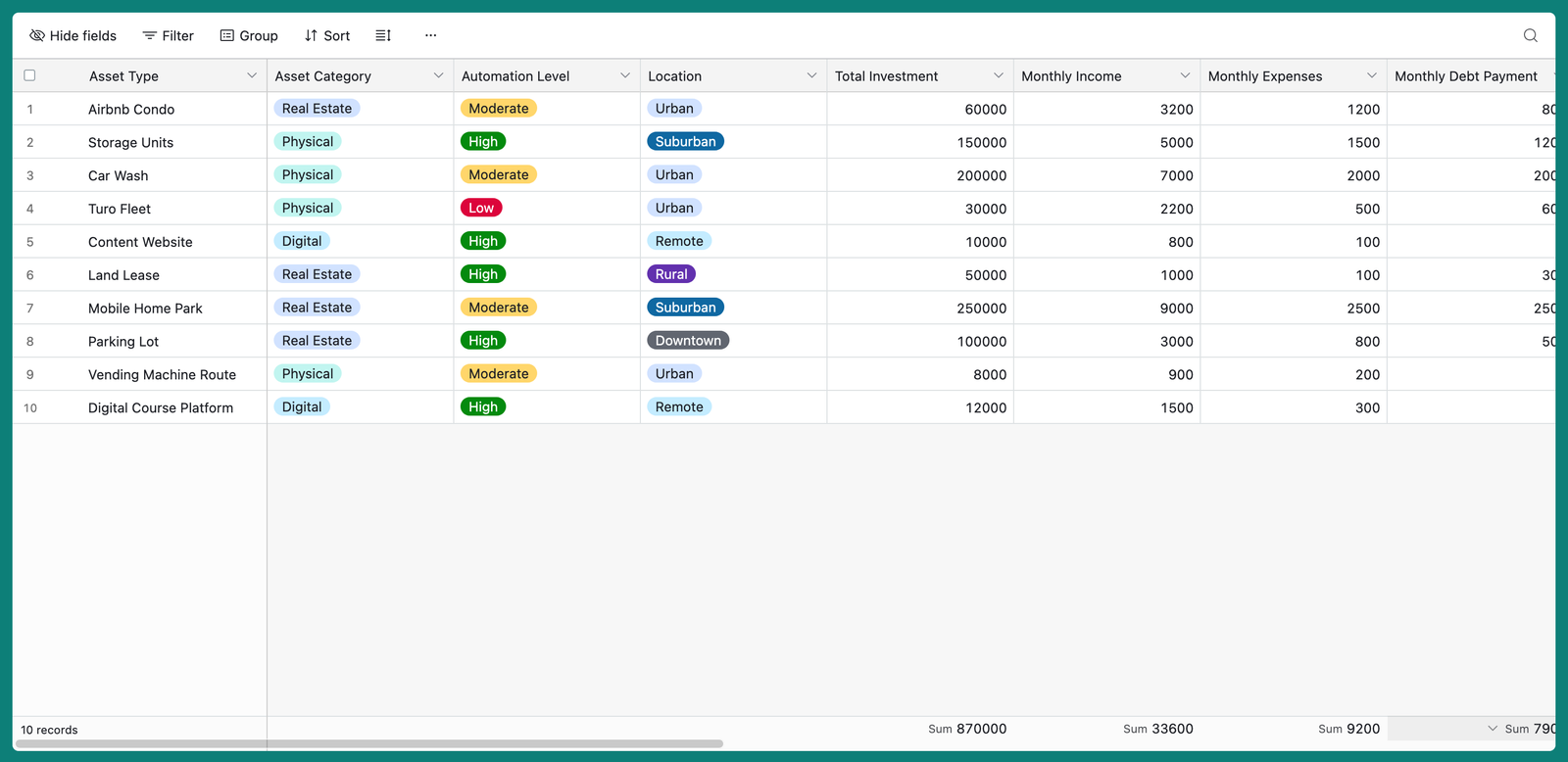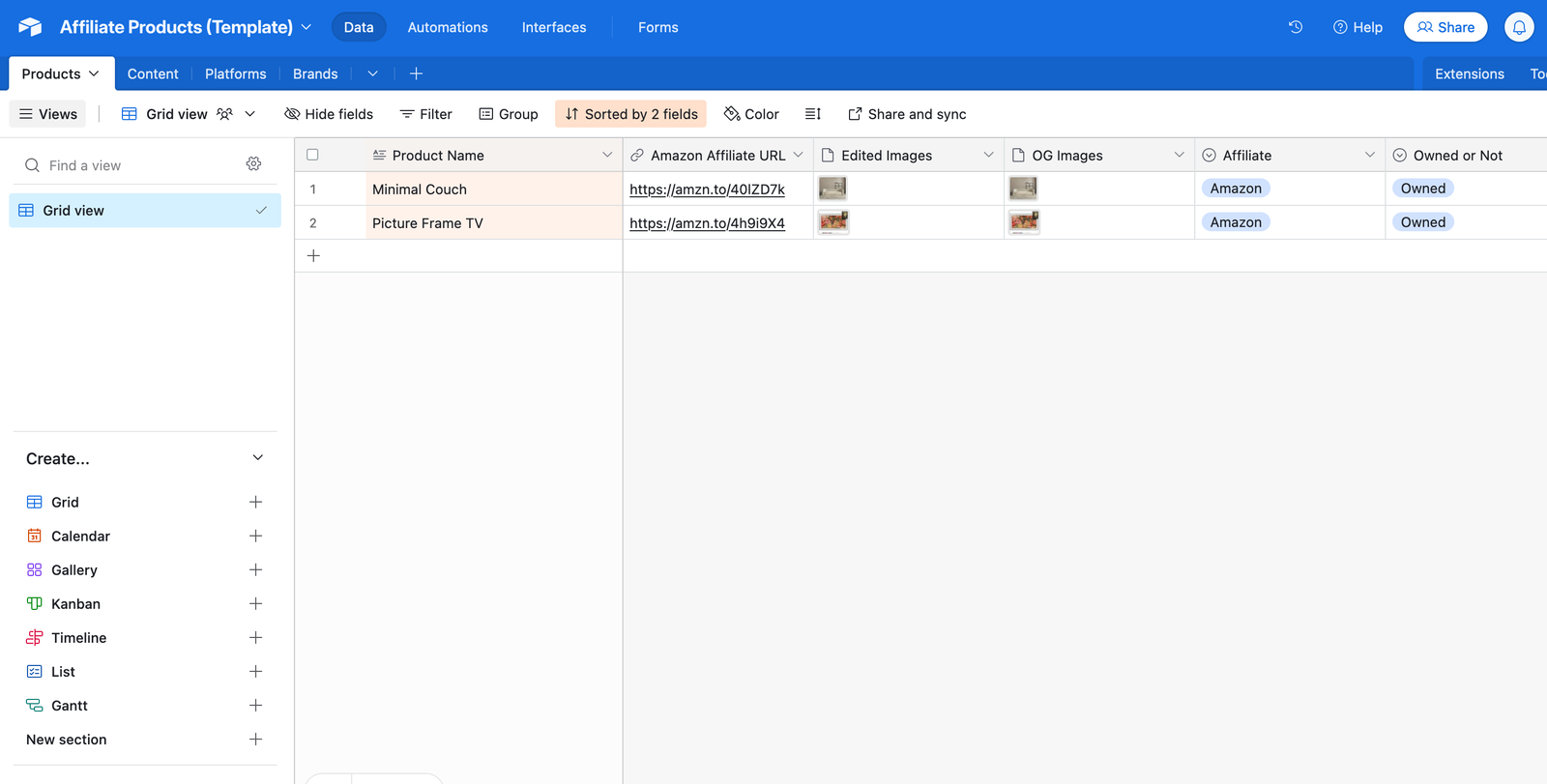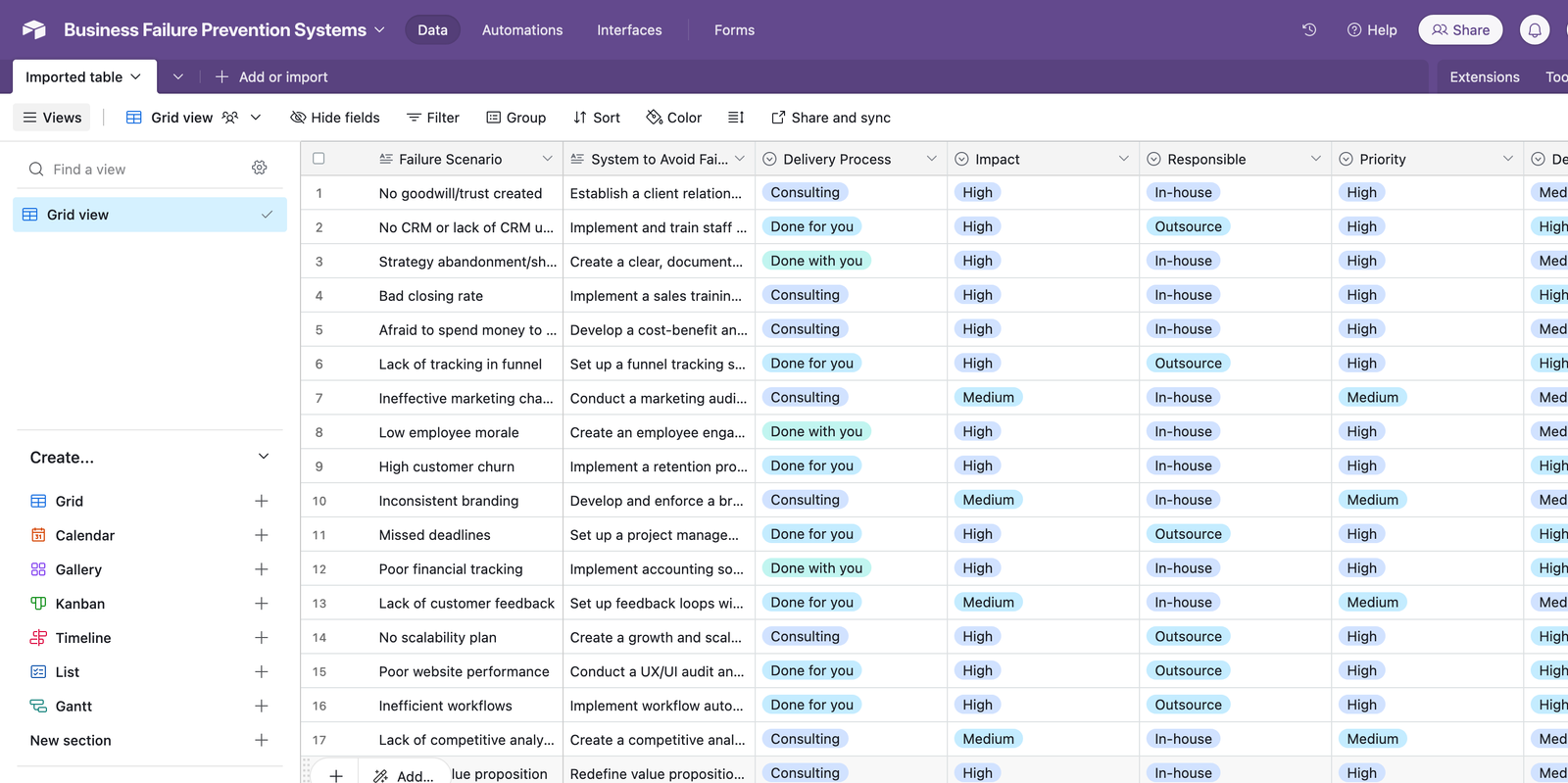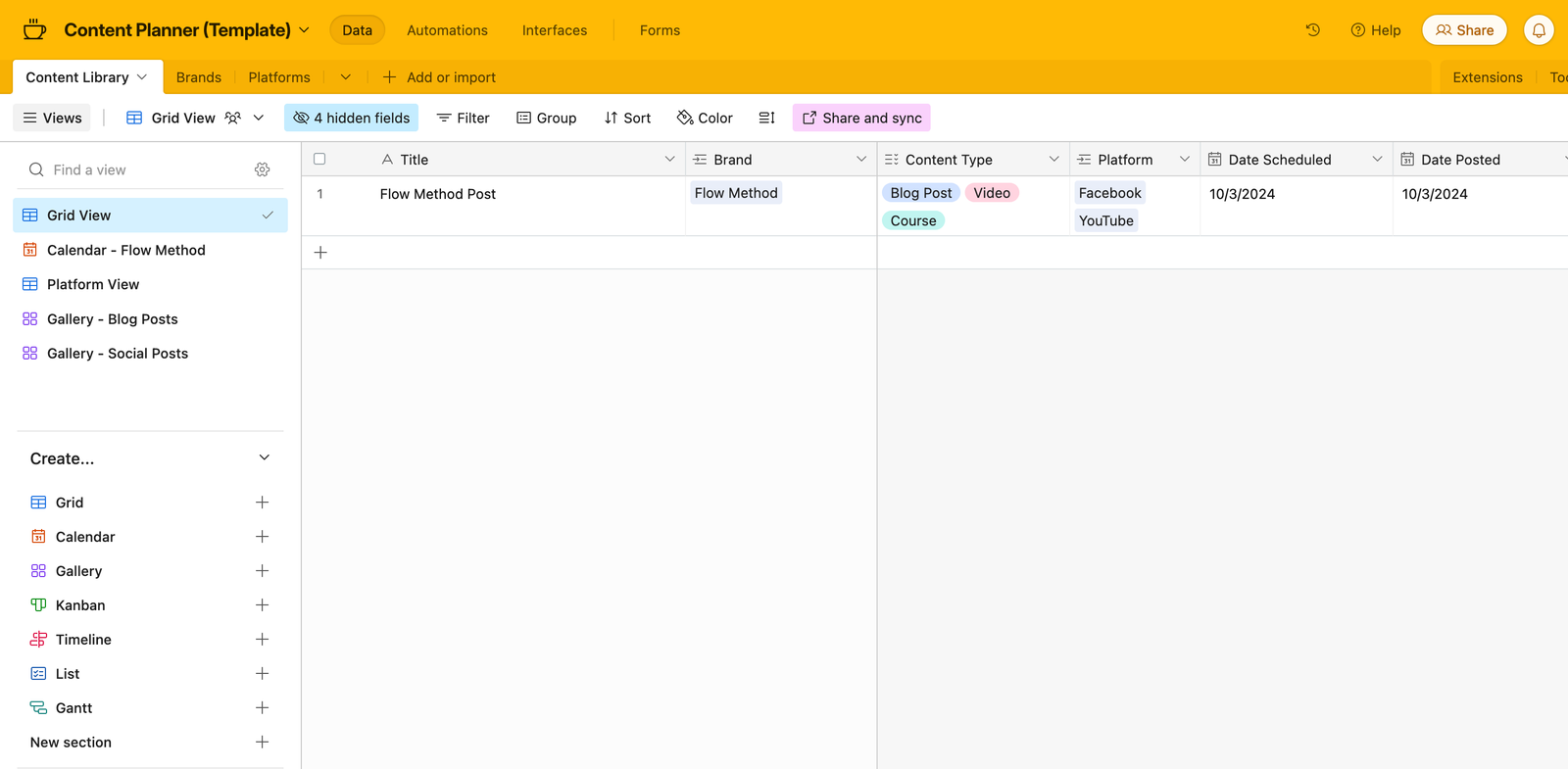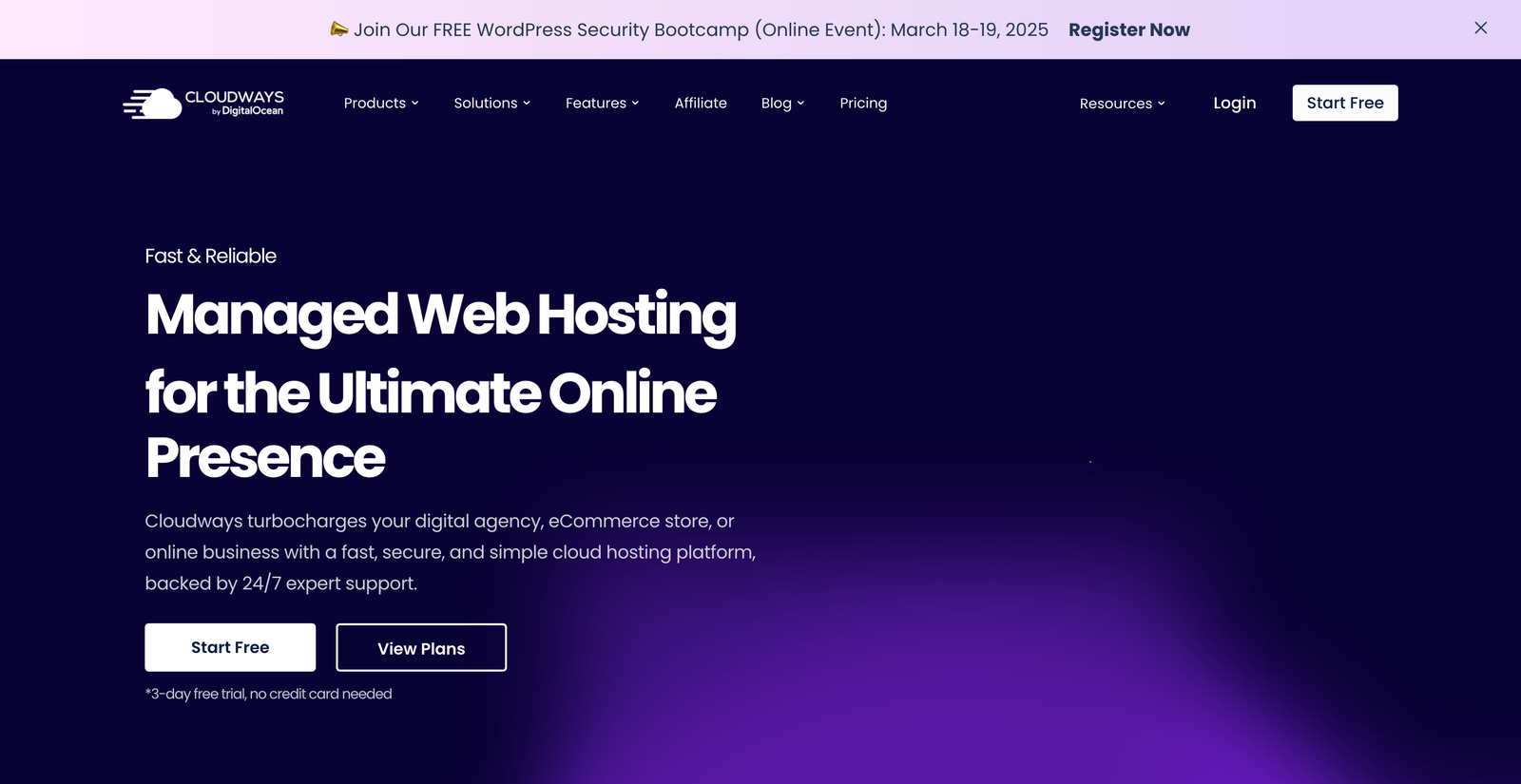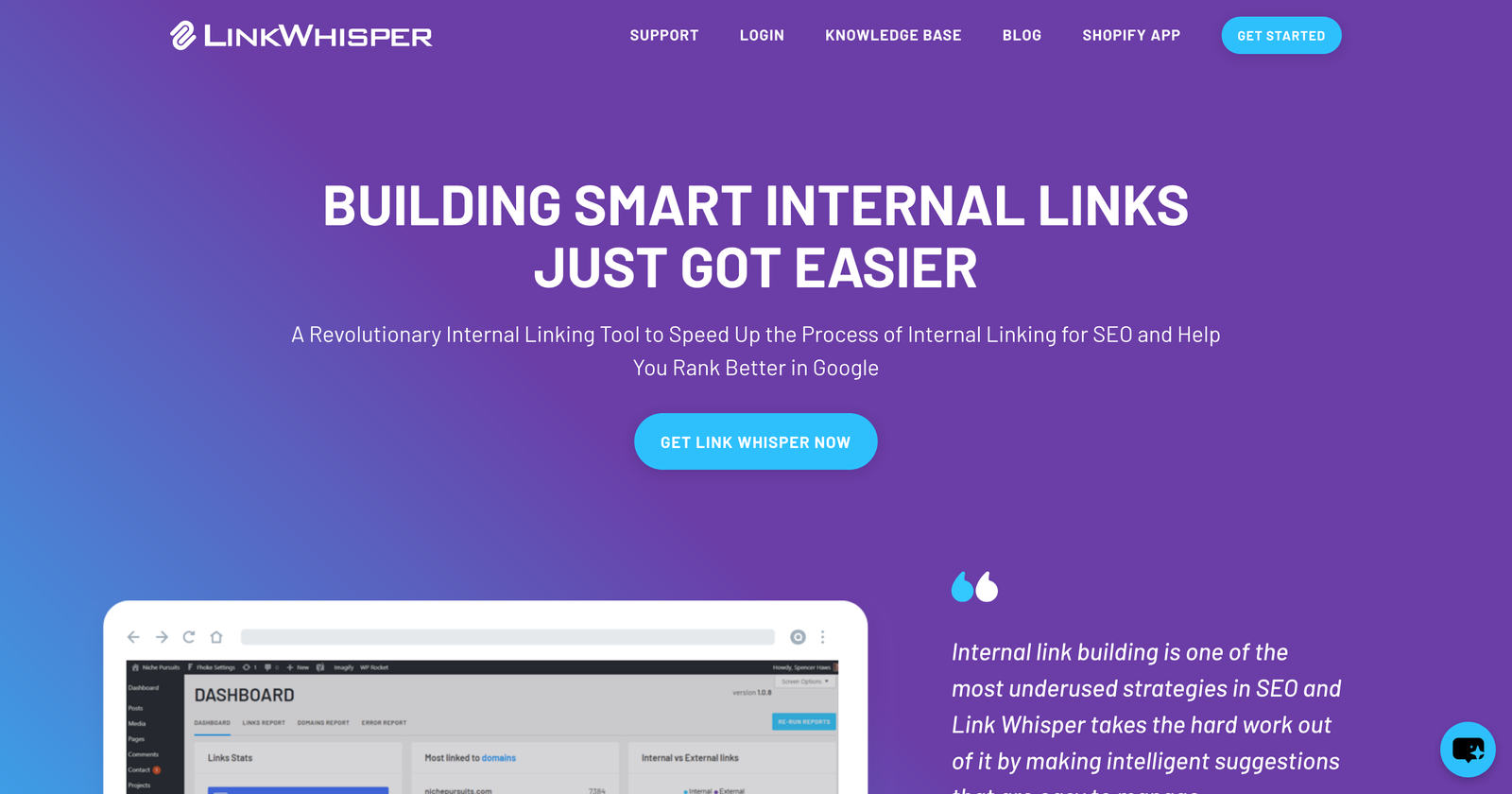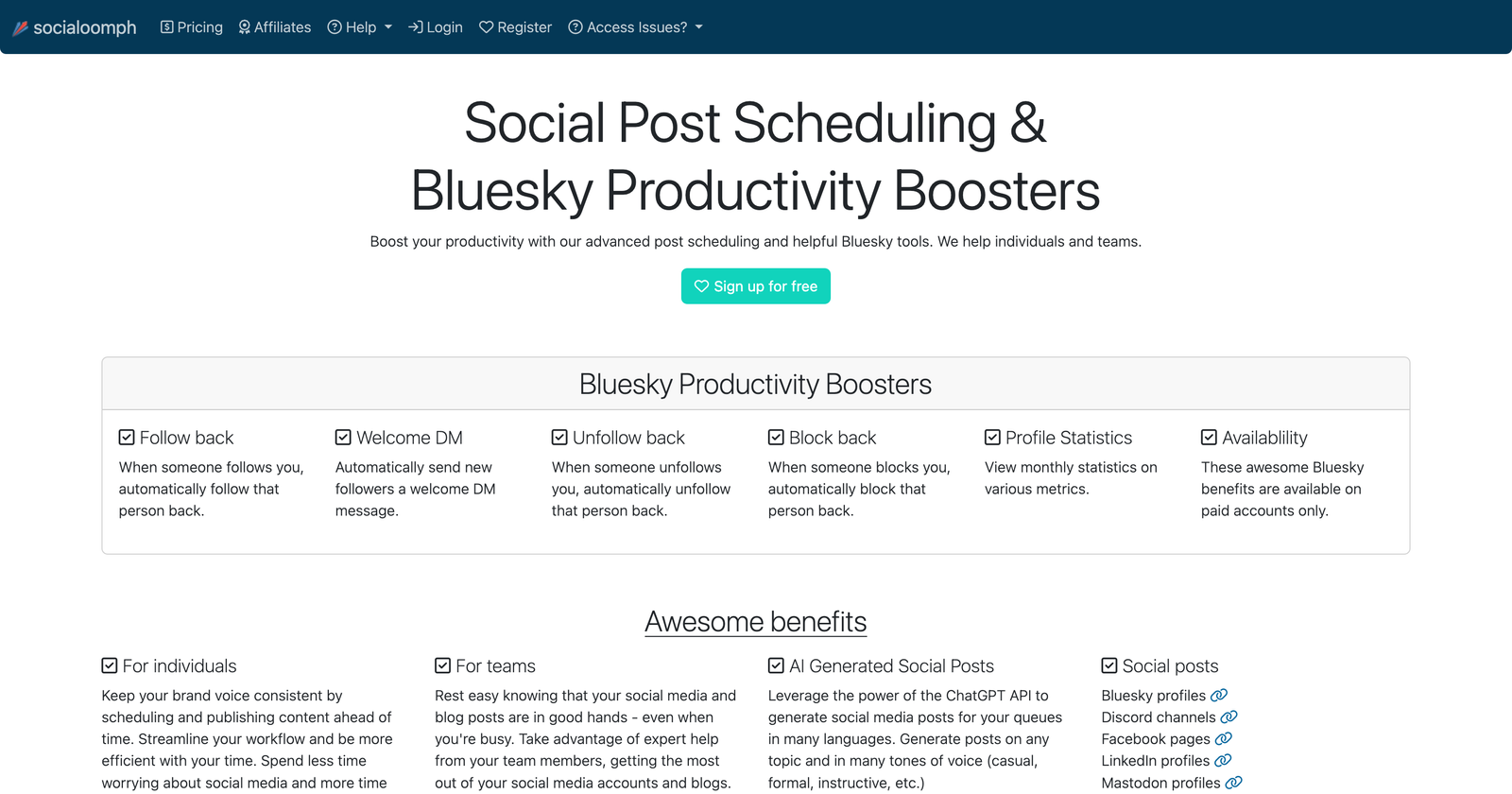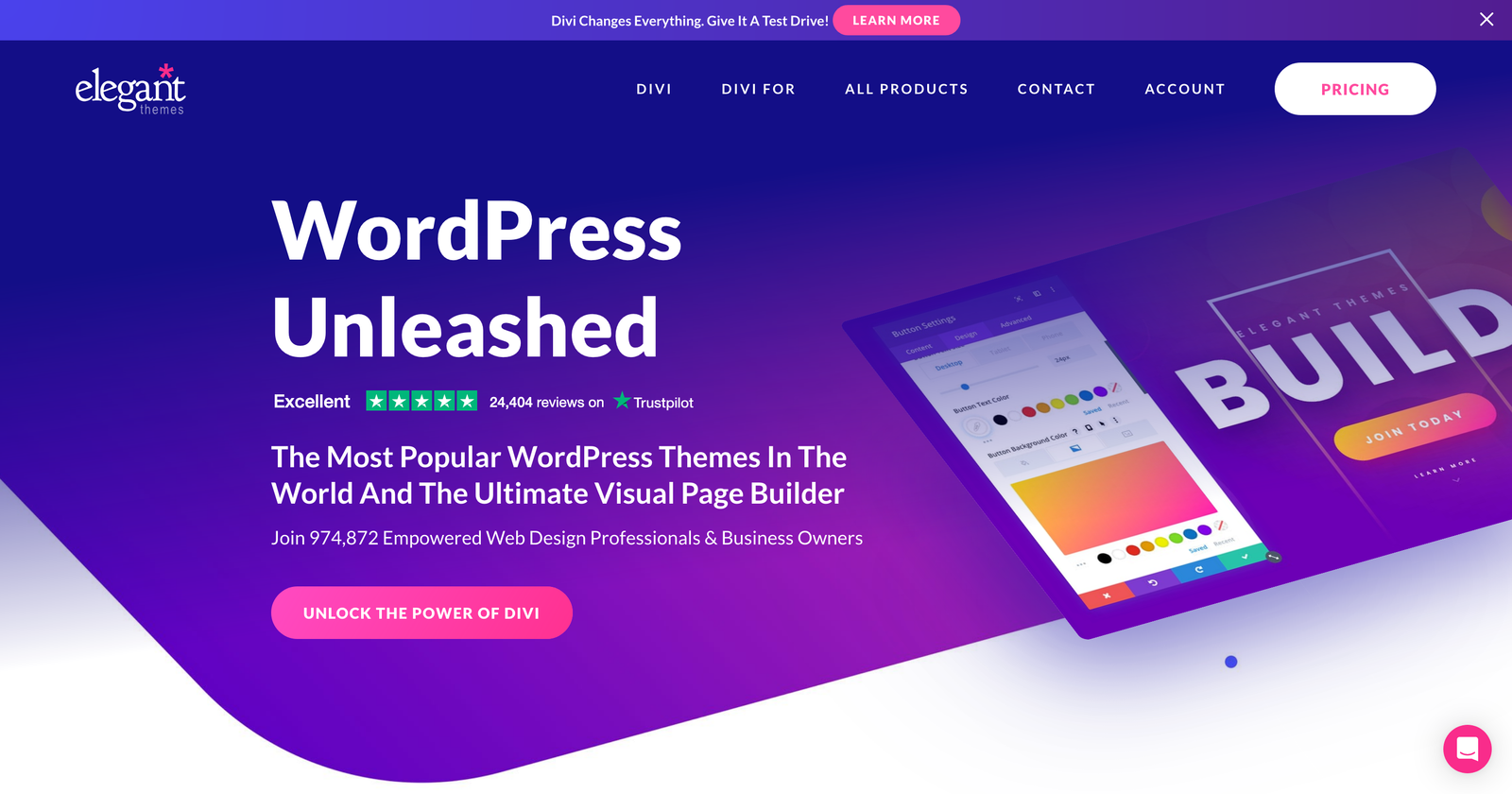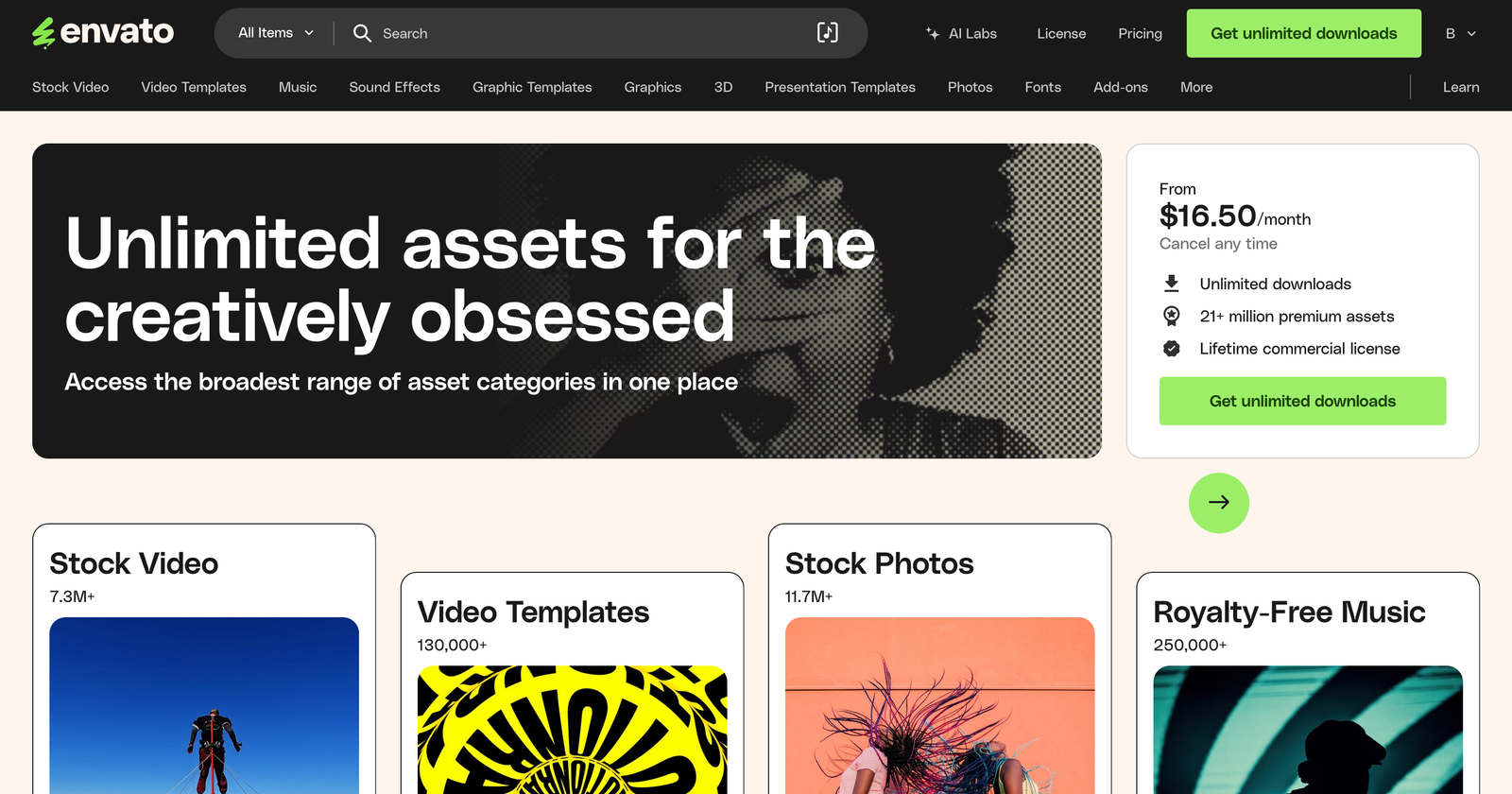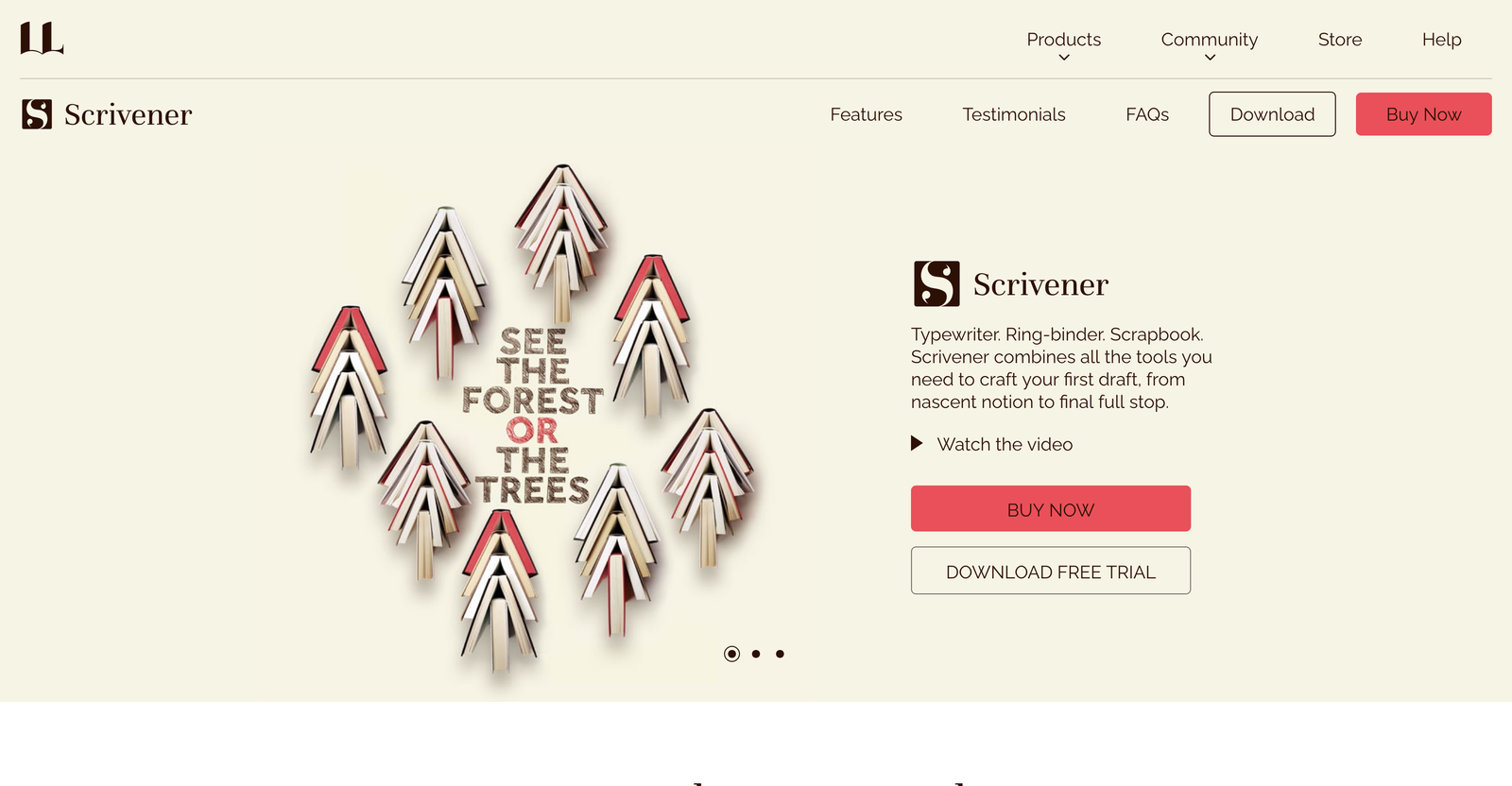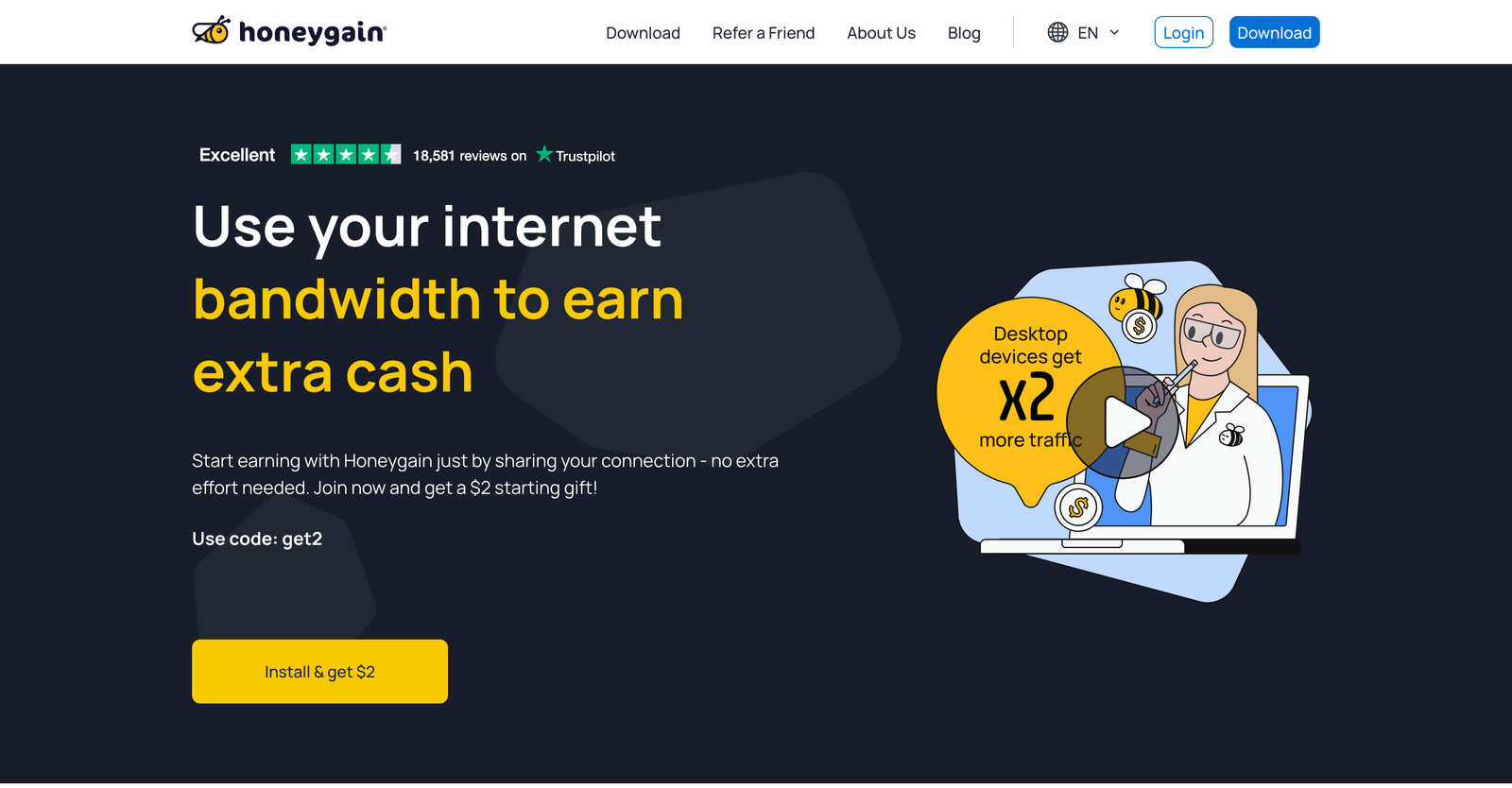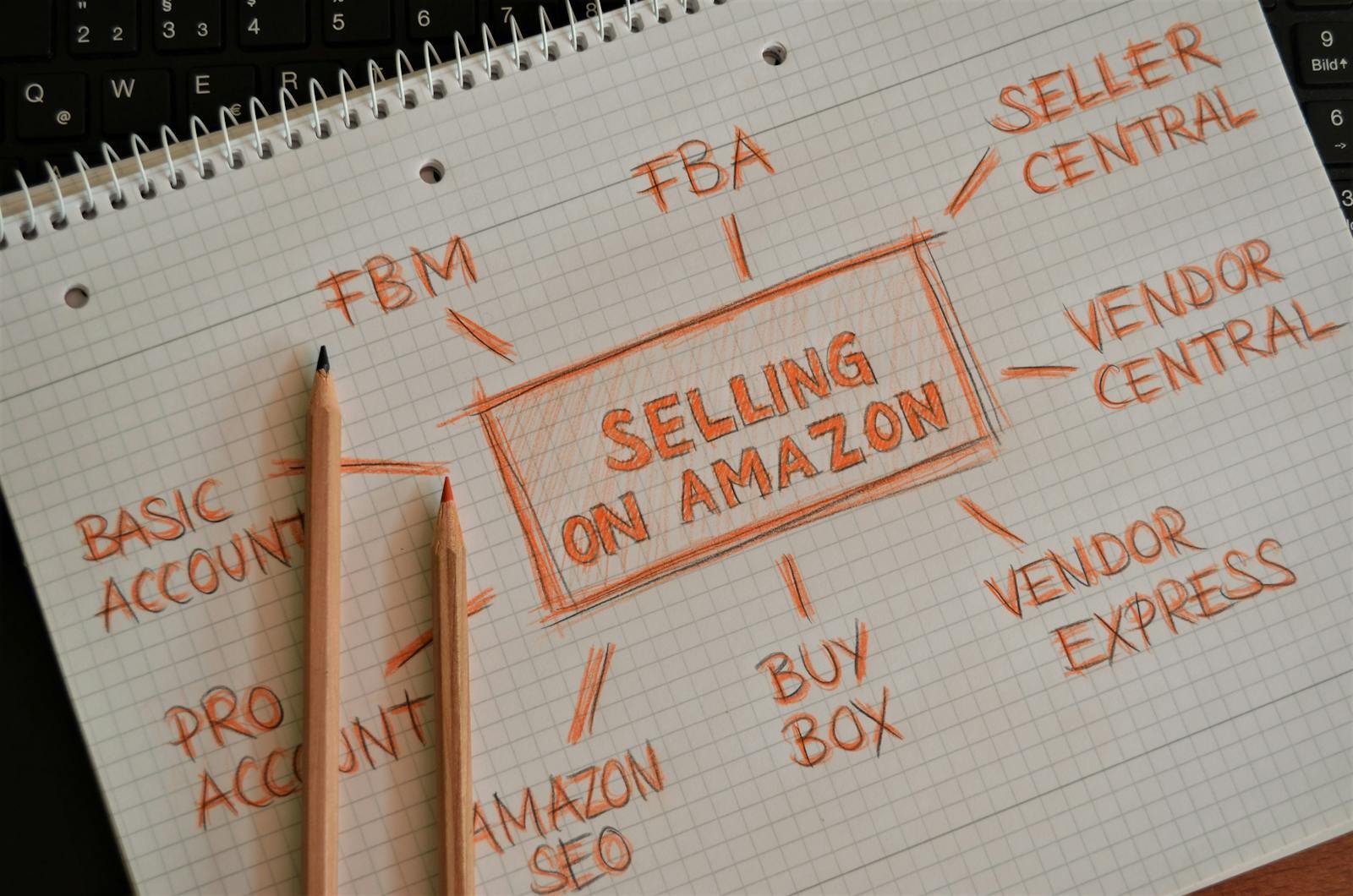Blogging Business Insights
Monetize &
Earn Passive Income
A profitable content-based business that earns through advertising, affiliates, and digital products.
Blogging Business Insights
Monetize &
Earn Passive Income
A profitable content-based business that earns through advertising, affiliates, and digital products.
Blogging Business Insights
🏆 Overall Business Viability Score
💰 Profitability Score
🚀 Scalability Score
⏳ Time to Profitability Score
💸 Startup Cost Score
🛠️ Operational Complexity Score
📢 Marketing & Customer Acquisition Score
🤖 Automation & Passive Income Score
📈 Market Demand Score
⚠️ Competition Level Score
🌱 Sustainability & Longevity Score
📊 Revenue Stability Score
🏗️ Barrier to Entry Score
🎯 Target Market Size Score
🔧 Skill & Experience Requirement Score
📍 Location Flexibility Score
💼 Legal & Compliance Complexity Score
🔥 Economic Resilience Score
🔄 Recession Proof Score
🏁 Exit Strategy Score
Business Idea Overview:
Blogging is a low-cost, high-reward online business model that enables individuals to generate passive income by creating valuable content. Through SEO-driven traffic, ads, affiliate marketing, and digital products, bloggers can turn their passion into a scalable and automated income source.
📊 Earning Potential
⚠️ Earnings Disclaimer: Actual earnings vary based on niche, strategy, and execution. There is no guarantee of success, and results depend on effort, market conditions, and business management.
🛠️ Best Platforms & Tools
To run a successful blog, essential tools include:
✅ Website Builders – SiteMake, WordPress, Webflow, Shopify (for e-commerce blogs)
✅ SEO Optimization – Rank Math, SEOFlow.app
✅ Content Creation – JotPro, Canva
✅ Monetization – Amazon Associates, Mediavine, AdThrive
Disclosure: Some links on this page are affiliate links, meaning we may earn a commission if you make a purchase, at no extra cost to you. Other links direct to our own brands or trusted resources.
⚠️ Biggest Challenge
The most difficult part is gaining traffic and monetizing early. SEO takes time, and most bloggers quit before seeing significant earnings. Consistency, keyword research, and marketing are crucial for long-term success.
💸 Startup Costs & Investment
$50–$500 to start, covering domain, hosting, website design, and initial marketing. Premium SEO tools and advertising can push initial costs to $1,000+.
📢 Customer Acquisition Strategy
✅ SEO-Driven Content Marketing – Optimizing articles for search engines to attract organic traffic.
✅ Social Media Marketing – Leveraging Pinterest, Instagram, and Twitter for traffic.
✅ Email List Building – Using lead magnets and newsletters to retain readers.
✅ Guest Blogging & Partnerships – Collaborating with other bloggers for exposure.
📈 Ideal Business Model
Recurring revenue + high-ticket offers through:
✅ Affiliate marketing (passive income per referral)
✅ Ad revenue (Mediavine, AdThrive, Google AdSense)
✅ Digital products & courses
✅ Membership & subscriptions
⏳ Time to Profitability
Most bloggers take 6-12 months before seeing meaningful income, and 12-24 months for full-time income. With aggressive marketing, revenue can come sooner.
🚀 Key to Scaling
✅ Outsourcing content creation (hiring writers, AI tools)
✅ Diversifying monetization (ads, affiliates, courses)
✅ Expanding into multiple niche blogs
✅ Automating email marketing and SEO optimization
🤖 Automation & Passive Income Potential
Blogging offers high passive income potential with ad revenue and affiliate marketing, especially for evergreen content. Once set up, minimal maintenance is required.
View Automation Tools
🏁 Exit Strategy
✅ Sell the blog for 20-40x monthly revenue
✅ Repurpose content into books, courses, or coaching
✅ Turn into a media brand with additional writers
🌱 Sustainability & Longevity
Blogging is a long-term business with sustainability, provided content remains updated. SEO updates and content refreshes help maintain traffic.
🔄 Market Trends & Demand
Ever-growing industry with increased competition. AI-generated content is rising, but authentic expertise-driven content remains valuable.
🆚 Competition Level
High but beatable with unique content, deep expertise, and audience engagement.
Sign up for SEO Flow and start your keyword research today. SEOFlow.app
📍 Location Flexibility
100% remote – work from anywhere with an internet connection.
Visit NomadWave’s Digital Nomad Community
🎯 Ideal Target Audience
Entrepreneurs, writers, content creators, and marketers who enjoy writing, research, and monetizing content.
🏗️ Operational Complexity
Moderate – Writing, SEO, and marketing are essential but can be outsourced.
🔧 Required Skills & Experience
✅ SEO & keyword research
✅ Content creation & writing
✅ Basic website management
✅ Digital marketing
💼 Legal & Compliance Considerations
✅ FTC disclosures for affiliate links
✅ GDPR compliance for email lists
✅ Copyright considerations for images & content
📊 Best Monetization Strategies
✅ Affiliate marketing (Amazon Associates, niche-specific programs)
✅ Display ads (Google AdSense, Mediavine)
✅ Selling eBooks & courses
✅ Sponsorships & brand deals
🔥 Recession & Economic Resilience
Blogging thrives during recessions as people turn to online resources for information and side hustles. Finance, DIY, and self-improvement niches perform well.
💰 Earning Potential in the Blogging Business
Blogging is one of the most scalable and lucrative online businesses, with earnings ranging from a few hundred dollars to six or seven figures annually. Your niche, traffic volume, monetization strategies, and consistency significantly impact your earnings.
🔹 Beginner Bloggers ($0 – $500/month)
In the first 3-6 months, most new bloggers focus on content creation, SEO, and audience building. Earnings at this stage are usually minimal, coming from small ad revenues or initial affiliate sales.
🔹 Intermediate Bloggers ($1,000 – $10,000/month)
Once a blog gets 10,000+ monthly visitors, earnings can increase substantially. Bloggers at this level generate income through:
✅ Affiliate marketing – Passive income from promoting relevant products/services
✅ Advertising networks – Google AdSense, Mediavine, AdThrive
✅ Sponsored posts & partnerships – Paid collaborations with brands
🔹 Advanced Bloggers ($10,000 – $100,000+/month)
Established blogs with high traffic (50,000+ visitors/month) earn significant revenue from multiple income streams:
✅ Selling digital products (eBooks, courses, memberships)
✅ Consulting & coaching services
✅ High-ticket affiliate programs
✅ Premium ad networks (AdThrive, Mediavine)
✅ Selling a blog for 30-40x its monthly profit
🔹 Multi-Site Blogging Empires ($100,000+/month)
Some entrepreneurs scale by running multiple niche blogs, hiring writers, and automating SEO strategies. These content empires rely on:
✅ AI-assisted content creation
✅ Team-based content production
✅ Monetization across multiple channels
📌 Key Factors That Influence Blogging Income
✅ Traffic Volume – More visitors = more revenue potential
✅ Niche Profitability – Finance, tech, and health niches generate higher earnings
✅ Content Monetization Strategy – Diversifying revenue sources maximizes profits
✅ SEO & Marketing – A well-optimized blog attracts organic, long-term traffic
🚀 How to Maximize Blogging Revenue
1️⃣ Target high-paying affiliate programs
2️⃣ Optimize for SEO & high-intent keywords
3️⃣ Diversify monetization (ads, sponsorships, digital products)
4️⃣ Leverage email marketing for long-term revenue growth
5️⃣ Expand to multiple niche blogs for passive income stacking
🔥 Final Verdict: Blogging Income Potential
✅ Low startup costs with high earning potential
✅ Slow to start but can generate passive income over time
✅ Scalable with automation, outsourcing, and multiple monetization channels
With dedication and the right strategy, blogging can be a six-figure or even seven-figure business over time. 🚀
⚠️ Earnings Disclaimer: Actual earnings vary based on niche, strategy, and execution. There is no guarantee of success, and results depend on effort, market conditions, and business management.
🏆 Best Business Models for Blogging
The success of a blogging business depends on how it’s structured and monetized. Different business models cater to various goals, audience types, and income streams. Below are the best blogging business models that generate consistent revenue.
1️⃣ Authority Blog (Content-Driven, Ad & Affiliate Monetization)
Overview:
An authority blog is built around high-quality, informative content in a specific niche. The goal is to rank on Google, attract organic traffic, and monetize through ads, affiliate marketing, and sponsored content.
Best Monetization Methods:
✅ Display Ads (Google AdSense, Mediavine, AdThrive)
✅ Affiliate Marketing (Amazon Associates, private affiliate programs)
✅ Sponsored Posts & Brand Deals
Pros:
✔ Passive income potential
✔ Scalable with evergreen content
✔ Low maintenance once traffic is established
Cons:
❌ Requires time to rank on search engines
❌ Highly competitive in popular niches
2️⃣ Niche Website (Highly Focused, Affiliate-Heavy Model)
Overview:
A niche website focuses on a specific, profitable topic (e.g., keto diet, smart home gadgets, pet care) and monetizes primarily through affiliate marketing. These sites thrive on SEO and high-intent buyer traffic.
Best Monetization Methods:
✅ Affiliate Marketing (Amazon, ShareASale, CJ, Impact)
✅ Lead Generation (Selling leads to businesses)
✅ E-commerce Integrations (Dropshipping, Print-on-Demand)
Pros:
✔ High earnings from targeted traffic
✔ Lower competition in specific sub-niches
✔ Can be flipped for 30x-40x monthly revenue
Cons:
❌ May need multiple sites to scale revenue
❌ Requires consistent SEO & content updates
3️⃣ Membership & Subscription Blog (Recurring Revenue Model)
Overview:
A membership blog restricts access to premium content for paying subscribers. This model ensures stable, recurring income but requires strong content differentiation to justify a subscription.
Best Monetization Methods:
✅ Membership Plans (Exclusive blog posts, masterclasses, case studies)
✅ Community Access (Private forums, coaching groups)
✅ Paid Newsletters & Reports
Pros:
✔ Predictable, recurring income
✔ Builds a loyal community
✔ Less traffic-dependent
Cons:
❌ Requires high-value exclusive content
❌ Takes time to grow a paying audience
4️⃣ Digital Product Blog (High-Profit, Low-Overhead Model)
Overview:
A blog that sells digital products (eBooks, templates, printables, courses) is one of the most scalable business models. Content drives traffic, and readers become customers.
Best Monetization Methods:
✅ eBooks & Guides (Self-published content for niche audiences)
✅ Online Courses & Webinars (Skill-based training)
✅ Printables & Templates (Budgeting tools, design assets, planners)
Pros:
✔ High-profit margins (no inventory or fulfillment costs)
✔ Fully automated with email funnels
✔ Content attracts organic buyers over time
Cons:
❌ Requires trust & authority before selling
❌ Marketing & conversions can take time
5️⃣ Hybrid Model (Maximized Revenue Streams)
Overview:
A hybrid blog combines multiple revenue streams—ads, affiliate links, digital products, and memberships—to diversify income and reduce risk.
Best Monetization Methods:
✅ Ads + Affiliate Marketing + Digital Products
✅ Courses + Membership + High-ticket Consulting
✅ Podcast & Video Content for Sponsorships
Pros:
✔ Most profitable long-term strategy
✔ Minimizes risk by not depending on one revenue source
✔ Scales well with email marketing & audience growth
Cons:
❌ Requires more effort & management
❌ Takes time to build multiple income streams
🔹 Final Verdict: Best Blogging Business Model?
✅ Beginners: Start with Niche Websites + Affiliate Marketing
✅ Intermediate Bloggers: Expand into Digital Products + Online Courses
✅ Advanced Bloggers: Scale with Memberships + Subscription-based Models
A multi-stream approach (hybrid model) is best for long-term growth & sustainability 🚀
Get JotPro, the intuitive AI writing tool with over 50 templates, and countless features like Speech-to-Text and Text-to-Speech. Sign Up Free
Disclosure: Some links on this page are affiliate links, meaning we may earn a commission if you make a purchase, at no extra cost to you. Other links direct to our own brands or trusted resources.
🔥 Conversion Tactics for a Profitable Blogging Business
Driving traffic to a blog is only half the battle—the real success comes from converting visitors into subscribers, customers, or loyal readers. Below are proven conversion tactics that will help bloggers maximize revenue and engagement.
1️⃣ High-Quality Lead Magnets – Capture Emails & Build an Audience
Offering a valuable free resource in exchange for an email address is one of the best ways to convert blog visitors into subscribers and customers.
✅ Best Lead Magnet Ideas:
- Free eBooks, checklists, or PDF guides
- Exclusive templates, swipe files, or cheat sheets
- Free mini-courses or workshops
- Discounts or bonus offers on digital products or memberships
🔹 Why It Works: People are more likely to subscribe when they receive something valuable upfront.
2️⃣ Optimized Call-to-Actions (CTAs) – Guide Visitors to Take Action
Most visitors won’t take action unless prompted. The key is strategic CTA placement throughout the blog.
✅ Best CTA Placements:
- In-content CTAs – Placing buttons or links within blog posts
- Exit-intent popups – Capturing leads before visitors leave
- Sidebar & footer CTAs – Passive but visible conversion points
- Above-the-fold CTA banners – Immediate visibility upon page load
🔹 Why It Works: A clear CTA tells visitors exactly what to do next, increasing conversions.
3️⃣ Content Upgrades – Boost Engagement & Lead Capture
A content upgrade is an extra resource that complements a specific blog post.
✅ Examples of Content Upgrades:
- A PDF version of the blog post for easy reading
- A bonus checklist or worksheet related to the blog topic
- A step-by-step action guide expanding on the blog content
🔹 Why It Works: People who are already engaged with the content are more likely to convert when offered a related bonus.
4️⃣ Exit-Intent Popups – Capture Visitors Before They Leave
Exit-intent popups appear when a visitor is about to leave the page, offering them a final opportunity to engage.
✅ Best Exit-Intent Popup Offers:
- A discount on a product or service
- A freebie in exchange for an email
- A limited-time offer to create urgency
🔹 Why It Works: Exit-intent popups recover lost traffic and convert abandoning visitors into leads.
5️⃣ Social Proof & Trust Signals – Increase Credibility
People are more likely to trust and convert when they see that others have benefited from the blog’s content or offerings.
✅ Ways to Add Social Proof:
- Testimonials & success stories from readers
- Case studies demonstrating proven results
- Media features (e.g., “As Seen On” badges)
- Subscriber & follower counts (if large enough)
🔹 Why It Works: Social proof builds trust and credibility, increasing conversions.
6️⃣ Personalized & Smart Offers – Increase Conversions with Behavioral Triggers
Using dynamic offers based on user behavior makes CTAs more relevant and engaging.
✅ Personalized Offer Examples:
- First-time visitors → Get a welcome offer
- Returning visitors → Show related content or a special deal
- Based on scroll depth → Offer an upgrade after reading a certain percentage of a post
🔹 Why It Works: Personalized experiences feel tailored to the visitor, improving engagement.
7️⃣ A/B Testing – Optimize for Higher Conversions
A/B testing different headlines, CTAs, and landing pages helps bloggers find the best-performing elements for conversions.
✅ What to A/B Test:
- CTA buttons (text, color, placement)
- Headline variations (curiosity-driven vs. direct)
- Form length (short vs. long)
- Lead magnet offers (different types of free content)
🔹 Why It Works: Data-driven decisions ensure maximum conversions over time.
8️⃣ Retargeting & Follow-Ups – Bring Visitors Back
Not all visitors convert on the first visit. Retargeting keeps your blog and offers top-of-mind.
✅ Best Retargeting Strategies:
- Email sequences to nurture leads
- Facebook & Google retargeting ads
- Push notifications for updates & offers
🔹 Why It Works: Follow-ups increase conversions by reminding visitors about the value of returning.
🔹 Final Verdict: Best Conversion Tactics for Blogging
✅ Best for Capturing Emails: Lead magnets, content upgrades, and popups
✅ Best for Immediate Conversions: Smart CTAs, A/B testing, and social proof
✅ Best for Long-Term Conversions: Retargeting, follow-ups, and email nurturing
The highest-converting blogs use a combination of these tactics to turn casual readers into subscribers, customers, and loyal followers 🚀
💰 Most Profitable Niches for Blogging
Choosing the right niche is key to running a profitable blog. Some topics have high traffic potential but low earnings, while others offer less traffic but higher revenue per visitor. Below are the most profitable blogging niches with strong monetization potential.
1️⃣ Personal Finance & Investing – High Affiliate & Ad Revenue
💰 Why It’s Profitable:
- Finance blogs attract high-value advertisers (banks, insurance, credit companies).
- Affiliate programs offer high commissions (e.g., investment platforms, financial tools).
- Many readers are willing to pay for premium financial advice.
🔹 Best Monetization Strategies:
✅ Affiliate marketing (investment platforms, credit cards, budgeting tools)
✅ Ads (high CPMs & CPCs) due to finance-related searches
✅ Digital products (eBooks, courses, coaching)
🔥 Earnings Potential: $10K – $500K+ per month (with traffic & strong monetization)
2️⃣ Health, Fitness & Wellness – Huge Audience & Recurring Sales
💰 Why It’s Profitable:
- People are always searching for health and fitness tips.
- Wellness products have strong affiliate programs and recurring revenue.
- Paid memberships for meal plans, workouts, and coaching can be lucrative.
🔹 Best Monetization Strategies:
✅ Affiliate sales (supplements, workout gear, meal plans)
✅ Sponsored posts from fitness brands
✅ Subscription-based content (exclusive fitness programs, meal plans)
🔥 Earnings Potential: $5K – $250K per month (with memberships & affiliate income)
3️⃣ Technology & Gadgets – High Commissions from Product Reviews
💰 Why It’s Profitable:
- Tech product reviews drive high commissions (phones, laptops, smart devices).
- The tech industry constantly evolves, keeping demand strong.
- Software, web hosting, and tools offer recurring affiliate commissions.
🔹 Best Monetization Strategies:
✅ Affiliate marketing (Amazon, software subscriptions, hosting plans)
✅ Display ads (tech blogs have high CPMs)
✅ Sponsored content (brands want to be featured)
🔥 Earnings Potential: $5K – $100K per month (with high-traffic product reviews)
4️⃣ Business & Entrepreneurship – High-Ticket Products & Coaching
💰 Why It’s Profitable:
- Business owners spend money on tools, courses, and services.
- Many products have high-ticket affiliate commissions.
- Readers are motivated to invest in learning & growth.
🔹 Best Monetization Strategies:
✅ Affiliate marketing (business software, courses, tools)
✅ Digital products (courses, eBooks, coaching programs)
✅ High-ticket consulting (B2B services, business coaching)
🔥 Earnings Potential: $10K – $500K per month (with high-value clients)
5️⃣ Travel & Lifestyle – Best for Sponsored Content & Affiliate Earnings
💰 Why It’s Profitable:
- Travel bloggers can monetize through sponsorships & tourism partners.
- Readers book hotels, flights, and travel gear, earning affiliate commissions.
- Luxury travel content attracts high-end brand sponsorships.
🔹 Best Monetization Strategies:
✅ Affiliate sales (hotels, flights, travel insurance, gear)
✅ Sponsored trips & partnerships (tourism boards, brands)
✅ Ads & passive income (high-volume travel content)
🔥 Earnings Potential: $5K – $100K per month (with strong affiliate partnerships)
6️⃣ DIY, Crafts & Home Improvement – High Engagement & Evergreen Content
💰 Why It’s Profitable:
- DIY and home decor content gets tons of evergreen traffic.
- Affiliate earnings from tools, decor, furniture, and craft supplies.
- Strong engagement with Pinterest & social media audiences.
🔹 Best Monetization Strategies:
✅ Affiliate sales (home decor, tools, DIY kits)
✅ Ad revenue (high traffic from Pinterest & Google)
✅ E-commerce (selling templates, craft products, or workshops)
🔥 Earnings Potential: $3K – $50K per month (with a strong audience)
7️⃣ Parenting & Family – Recurring Revenue & Trust-Based Sales
💰 Why It’s Profitable:
- Parents are loyal readers who trust recommendations.
- Affiliate programs for baby products, parenting courses, and toys are strong.
- Recurring revenue from membership sites & coaching.
🔹 Best Monetization Strategies:
✅ Affiliate sales (baby gear, parenting books, kids’ products)
✅ Sponsored content (family brands, educational tools)
✅ Courses & membership programs (parent coaching, homeschooling)
🔥 Earnings Potential: $3K – $75K per month (with engaged readers)
8️⃣ Self-Improvement & Productivity – Strong Digital Product Sales
💰 Why It’s Profitable:
- Personal development readers love buying courses & books.
- Productivity tools and planners offer strong affiliate earnings.
- High-margin digital product sales (coaching, courses, eBooks).
🔹 Best Monetization Strategies:
✅ Courses & digital products (personal growth, habits, time management)
✅ Affiliate marketing (self-help books, coaching programs)
✅ Ads & memberships (exclusive productivity communities)
🔥 Earnings Potential: $5K – $150K per month (with strong branding & content)
🔹 Final Verdict: Most Profitable Blogging Niches
✅ Best for High Commissions: Personal finance, technology, business
✅ Best for Passive Income: Travel, DIY, parenting, productivity
✅ Best for Recurring Revenue: Fitness, business, self-improvement
The most successful bloggers mix multiple monetization strategies, such as affiliate sales, courses, ad revenue, and sponsored posts to create a high-income, long-term business. 🚀
📊 Blogging vs. Other Business Models
Blogging is a unique business model with low startup costs, high scalability, and multiple income streams, but it also has its own set of challenges. Here’s how it stacks up against other popular business models.
🆚 Blogging vs. E-Commerce
| Factor | Blogging | E-Commerce |
|---|---|---|
| Startup Costs | Low (domain, hosting, content) | High (inventory, logistics, marketing) |
| Time to Profitability | Slow (SEO & content take time) | Fast (if ads & traffic are optimized) |
| Scalability | High (multiple niches & income streams) | Moderate (depends on product availability) |
| Profit Margins | High (passive income, no inventory) | Lower (product costs, shipping, returns) |
| Best Monetization | Ads, affiliate marketing, digital products | Product sales, dropshipping, subscriptions |
| Risk Level | Low (little upfront investment) | Higher (inventory risks, returns, supply chain) |
🔹 Verdict: Blogging is better for those who want passive income, while e-commerce is better for product-based businesses with higher marketing budgets.
🆚 Blogging vs. Affiliate Marketing
| Factor | Blogging | Affiliate Marketing (Standalone) |
|---|---|---|
| Startup Costs | Low (content creation & hosting) | Low (no products needed) |
| Time to Profitability | Moderate (depends on SEO & traffic) | Faster (if traffic source is optimized) |
| Scalability | High (multiple blog topics & income sources) | Medium (limited by traffic source) |
| Profit Margins | High (ads, digital products, courses) | Moderate (commissions vary) |
| Best Monetization | Ads, affiliate, courses, memberships | Commission-based sales (Amazon, software) |
| Risk Level | Low (long-term growth) | Medium (depends on platform algorithms) |
🔹 Verdict: Blogging offers more control & diversification, while affiliate marketing is faster but riskier if a platform (Google, Amazon) changes its rules.
🆚 Blogging vs. YouTube & Video Content
| Factor | Blogging | YouTube/Video Content |
|---|---|---|
| Startup Costs | Low (website, writing) | Higher (camera, editing software, production) |
| Time to Profitability | Slow (SEO takes time) | Faster (viral videos can drive revenue quickly) |
| Scalability | High (multiple blogs & content formats) | Medium (time-intensive, algorithm-based) |
| Profit Margins | High (ads, digital products) | Moderate (depends on ads, sponsorships) |
| Best Monetization | Ads, affiliate, membership sites, courses | AdSense, sponsorships, memberships |
| Risk Level | Low (evergreen content ranks long-term) | Medium (platform-dependent, demonetization risks) |
🔹 Verdict: Blogging is better for long-term, SEO-driven passive income, while YouTube works faster but is highly dependent on trends & video production.
🆚 Blogging vs. Freelancing
| Factor | Blogging | Freelancing |
|---|---|---|
| Startup Costs | Low (writing & SEO skills) | Low (no inventory or overhead) |
| Time to Profitability | Slow (requires traffic growth) | Fast (clients pay immediately) |
| Scalability | High (passive income model) | Low (trading time for money) |
| Profit Margins | High (digital revenue, no physical goods) | High (service-based, no overhead) |
| Best Monetization | Ads, courses, memberships | Client work, retainers, high-ticket services |
| Risk Level | Low (once established) | High (income depends on clients & workload) |
🔹 Verdict: Freelancing is great for immediate income, but blogging is better for long-term, scalable passive income.
🆚 Blogging vs. SaaS & Digital Product Business
| Factor | Blogging | SaaS/Digital Products |
|---|---|---|
| Startup Costs | Low (just content & hosting) | High (development, design, testing) |
| Time to Profitability | Slow (content marketing & SEO take time) | Fast (if marketed properly) |
| Scalability | High (many monetization options) | Very High (subscription model scales well) |
| Profit Margins | High (ads, affiliate, courses) | High (recurring revenue & low overhead) |
| Best Monetization | Ads, affiliate marketing, memberships | Subscriptions, lifetime deals, upgrades |
| Risk Level | Low (no major financial risk) | High (software bugs, updates, competition) |
🔹 Verdict: Blogging is easier to start, while SaaS is more scalable but requires investment & technical expertise.
🔹 Final Verdict: Should You Choose Blogging?
✅ Best for Long-Term Passive Income: Blogging takes time but compounds over time.
✅ Best for Low Startup Costs: No inventory, no major financial risk.
✅ Best for Diversified Revenue: Multiple monetization strategies (ads, affiliate, digital products).
✅ Best for Evergreen Content: Blog posts stay relevant & generate passive traffic.
🔹 Who Should Avoid Blogging?
🚫 If you need money quickly, freelancing or e-commerce may be better.
🚫 If you prefer video over writing, YouTube might be a better fit.
🚫 If you don’t want to create long-form content, affiliate marketing may be easier.
Blogging is one of the best low-risk, long-term passive income models, but it requires patience, SEO knowledge, and consistency. 🚀
🚀 Future Trends in the Blogging Business
Blogging continues to evolve with new technologies, consumer behaviors, and digital marketing trends. As competition grows, successful bloggers must adapt and innovate to stay ahead. Below are the key future trends shaping the blogging industry.
📱 1. AI-Powered Content Creation & Optimization
Artificial intelligence is transforming blogging with AI-generated content, research tools, and automation. Bloggers are using AI tools to:
✅ Speed up content writing and research.
✅ Optimize SEO and keyword research with AI-powered insights.
✅ Automate repetitive tasks like formatting and internal linking.
🔹 Future Impact: AI will help bloggers scale content faster, but high-quality, human-driven content will still outperform AI-generated blogs in engagement and trust.
🎥 2. Video & Multimedia Blogging Growth
With the rise of short-form video (TikTok, Instagram Reels, YouTube Shorts), blogs with embedded videos are seeing higher engagement and SEO rankings. Bloggers are:
✅ Creating video versions of blog posts.
✅ Using interactive content like infographics, podcasts, and animations.
✅ Embedding AI-generated video summaries within blogs.
🔹 Future Impact: Blogging will become more visual and interactive, with text-only content becoming less effective over time.
🔍 3. Search Engine Updates Favoring Authority & Experience
Search engines are prioritizing E-E-A-T (Experience, Expertise, Authoritativeness, Trustworthiness) in their ranking algorithms. This means:
✅ Bloggers must demonstrate real expertise and unique insights.
✅ Low-quality, AI-generated or regurgitated content will decline in rankings.
✅ Personal storytelling, expert opinions, and original research will be essential.
🔹 Future Impact: Niche bloggers with strong authority and personal experience will dominate search rankings.
📢 4. Rise of Micro-Niche & Authority Blogging
Broad-topic blogs are losing traffic to highly specialized blogs that focus on one specific topic in extreme depth. Future bloggers will:
✅ Build micro-niche sites instead of general blogs.
✅ Focus on hyper-targeted keywords with low competition.
✅ Establish trust and expertise in a single niche.
🔹 Future Impact: Success in blogging will come from deep expertise rather than covering a wide range of topics.
💰 5. Growth in Paid Subscriptions & Membership Blogs
Ad revenue is declining, and bloggers are shifting to direct monetization models, such as:
✅ Paid newsletters (Substack, Ghost).
✅ Exclusive membership content (Patreon, MemberSpace).
✅ High-value digital products (courses, templates, ebooks).
🔹 Future Impact: Bloggers will rely less on ad networks and more on loyal audiences willing to pay for premium content.
📲 6. Mobile-First & Voice Search Optimization
Over 70% of web traffic comes from mobile devices, and voice search is increasing. To stay ahead, bloggers must:
✅ Optimize for mobile-first indexing (fast loading, responsive design).
✅ Use conversational keywords for voice search optimization.
✅ Create shorter, direct answers for voice search snippets.
🔹 Future Impact: Blogs that prioritize mobile usability & voice search will capture more organic traffic.
🌍 7. Increased Focus on Sustainability & Ethical Blogging
Consumers are demanding transparent, ethical content and sustainable business practices. This means:
✅ Bloggers will focus on ethical monetization (no spammy ads, honest affiliate marketing).
✅ Content around sustainability, eco-friendly living, and minimalism will grow.
✅ Bloggers will be held accountable for misinformation and misleading claims.
🔹 Future Impact: Ethical, value-driven blogs will outperform low-quality, ad-heavy websites.
🔄 8. Omnichannel Content Strategies
Relying on Google traffic alone is risky, so bloggers are:
✅ Distributing content across social media, email lists, and YouTube.
✅ Repurposing blog posts into Twitter threads, Instagram posts, and LinkedIn articles.
✅ Driving traffic through Facebook groups, forums, and online communities.
🔹 Future Impact: Bloggers will need multiple traffic sources instead of relying on one platform for stability.
📌 Final Thoughts: Blogging in the Future
✅ Blogging is not dead—but it is evolving.
✅ AI, video, and multimedia content will be critical for success.
✅ Authority and trustworthiness will be the biggest ranking factors.
✅ Bloggers will need diversified income streams beyond just ads.
Blogging will continue to be a highly profitable business model, but those who adapt to new trends will be the ones who thrive. 🚀
Updates on
Blogging Business
Get notified on new updates with the
Blogging Business ecosystem.
Sponsor
Reviews of Blogging Business Landscape
https://www.gezesrkog.com/
Dear,
I hope this email finds you well. I’m excited to introduce you to Cargoholidays.com, your gateway to a unique and adventurous way of exploring the world through cargo ship travel. As a leading cargo travel agency, we specialize in creating unforgettable journeys that offer a fresh perspective on travel and adventure.
At CargoHolidays, we understand that traditional travel experiences may not be for everyone, and that’s why we offer an alternative that’s both enriching and fascinating. Our cargo ship travel services open up a world of possibilities for those seeking a truly authentic and immersive travel experience.
I invite you to explore our website at CargoHolidays Website to browse our available routes at cargoholidays.com, destinations, and testimonials from fellow adventurers who have experienced the magic of cargo ship travel with us.
If you’re ready to embark on a one-of-a-kind journey or have any questions about our services, please don’t hesitate to contact us at contact@cargoholidays.com. Our dedicated team is here to assist you in planning your cargo ship adventure, providing insights, and addressing any queries you may have.
Safe travels and warm regards,





